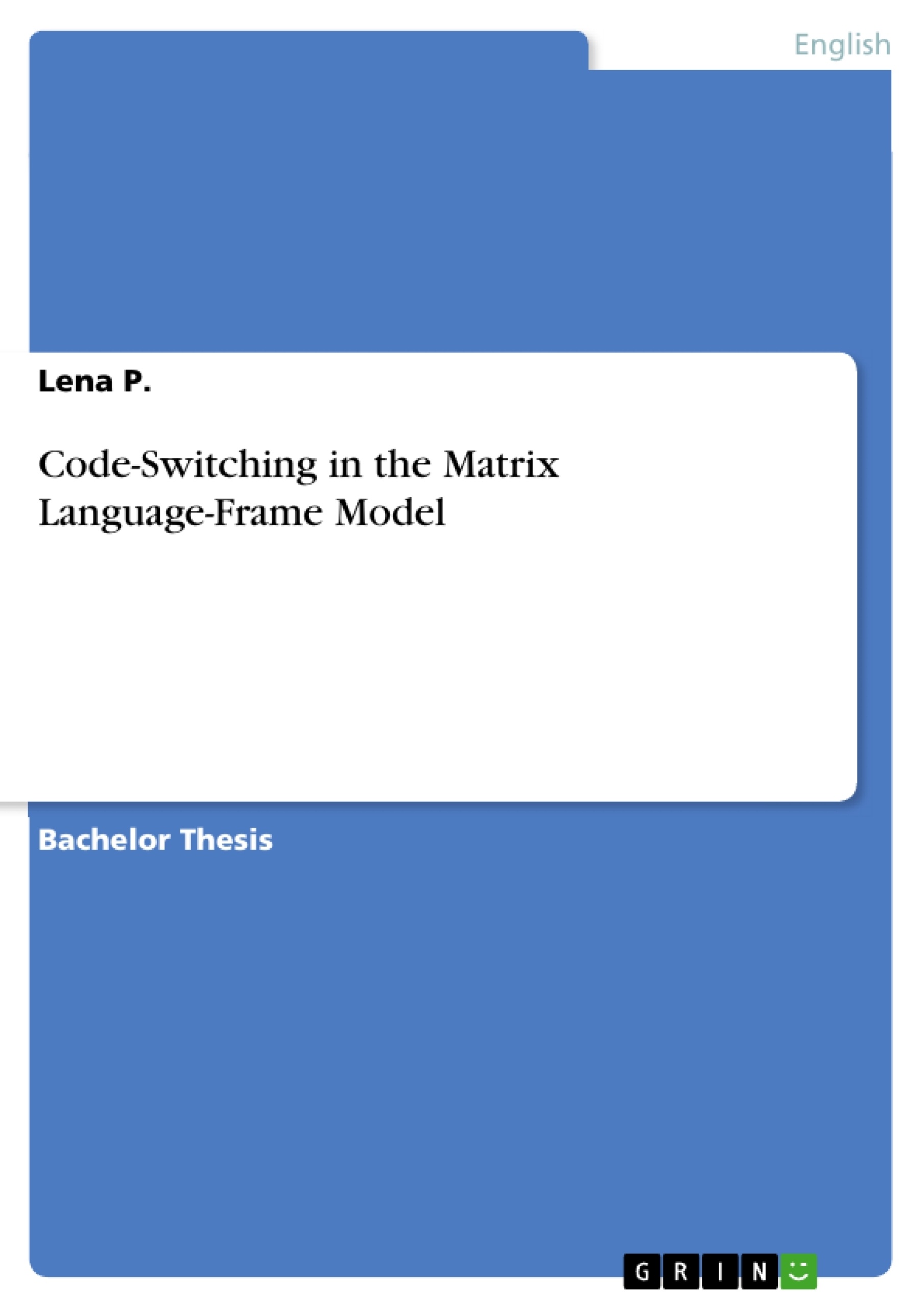The purpose of this paper is to look at the relation between structural and social factors in the formation of CS patterns in bi-/multilingual communities. Furthermore, the general applicability of the MLF and the MM to the CS data from different bilingual communities will be explored.
At the beginning, the concept of code-switching and its typology will be introduced. In section 3.2, the MLF will be presented in order to define morphological and syntactical constraints for CS. Then, in the frame of the MM, possible motivations for CS will be examined. These are followed by the perspective on the relation of both models to each other. In Chapter 4, using the MLF and the MM, CS data from several bilingual communities will be analysed and finally, problematic issues in both models will be discussed.
While monolinguals can vary their utterances by means of changing styles within a language or a dialect, through speech rate or intonation, bilinguals can do the same in both languages, plus they can switch between the languages. Thus, the speech of bilingual speakers is interesting for research. Many researchers have examined this language contact phenomenon and have tried to explain how and why people code-switch.
The study of CS has developed in two main directions: structural, that is grammatical and sociolinguistic, also called pragmatic aspect. Originally, CS was considered to be the result of poor language competence in both languages. Later, in the 1970s, linguists, for example, Gumperz (1972) and Pfaff (1979), suggested that mixing between languages does not occur randomly but rather follows certain grammatical rules. Many grammatical models have been proposed to account for the grammatical constraints in CS. One of the most influential models, the Matrix Language-Frame Model (MLF), was introduced by Myers-Scotton (1993b).
The model is based on two asymmetries: matrix language vs. embedded language, and system vs. content morphemes. However, not only structural factors but also social and psychological factors influence the speakers’ motivation to engage in CS. It is one of the biggest challenges in the research on CS to link all these factors to provide a better understanding of the phenomenon of CS. Therefore, Myers-Scotton (1993a) went further and developed the Markedness Model (MM) in an attempt to explain why bilingual speakers code-switch and how the social environment influences the type of CS present in the community.
Inhaltsverzeichnis (Table of Contents)
- Introduction
- Literature Overview
- Code-Switching (CS)
- Terminology and definitions
- Definition of CS
- CS vs. borrowing
- Types of code-switching
- Insertion vs. alternation
- Theoretical Models of CS
- The Matrix Language-Frame Model (MLF)
- The Markedness Model (MM)
- Intersection of the MLF and the MM
- Summary
- Discussion
- Supporting evidence for the MLF and the MM
- Bosnian-Turkish CS
- CS in Creole languages
- Chinese-English CS
- Problematic issues in the MLF and the MM
- Matrix Language definition
- System vs. content morpheme distinction
- Points of critique in the MM
- Summary
- Conclusion
Zielsetzung und Themenschwerpunkte (Objectives and Key Themes)
This paper aims to investigate the relationship between structural and social factors in the formation of code-switching patterns within bi-/multilingual communities. It will explore the general applicability of the Matrix Language-Frame Model (MLF) and the Markedness Model (MM) to code-switching data from diverse bilingual communities.
- The grammatical and sociolinguistic aspects of code-switching.
- The Matrix Language-Frame Model (MLF) and its application to code-switching patterns.
- The Markedness Model (MM) and its explanation of social motivations for code-switching.
- The relationship between the MLF and the MM.
- The analysis of code-switching data from various bilingual communities.
Zusammenfassung der Kapitel (Chapter Summaries)
The introduction establishes the concept of code-switching and its diverse definitions, highlighting its relevance in bilingual communication. The literature overview traces the evolution of code-switching research from early perspectives that viewed it as a sign of linguistic incompetence to later understandings that acknowledge it as a skilled and meaningful linguistic behavior. The chapter on "Code-Switching (CS)" delves into various definitions and types of code-switching, setting the stage for the introduction of the Matrix Language-Frame Model (MLF) and the Markedness Model (MM). The subsequent chapters analyze the MLF and the MM, focusing on their theoretical frameworks, providing examples of their application to real-world code-switching data, and discussing potential limitations and areas for further research.
Schlüsselwörter (Keywords)
Code-switching, bilingualism, Matrix Language-Frame Model (MLF), Markedness Model (MM), grammatical constraints, social factors, linguistic competence, language contact, conversational code-switching, insertional approach, alternational approach, structural approach, sociolinguistic approach.
- Quote paper
- Lena P. (Author), 2014, Code-Switching in the Matrix Language-Frame Model, Munich, GRIN Verlag, https://www.grin.com/document/318866



